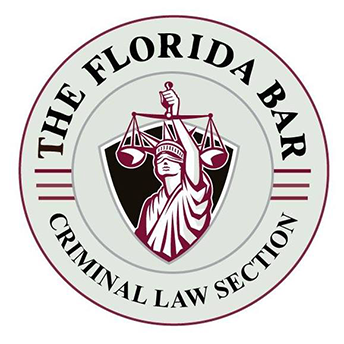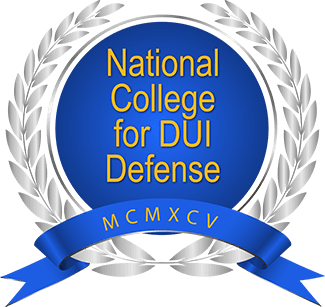Crimes for Escape in Florida
Crimes for escape or attempted escape in Florida are found in s. 944.40, F.S.
Escape crimes require proof that a person confined in any prison, jail, private correctional facility, camp, or other penal institution, working on public roads, or being transported from a place of confinement, who escapes or attempts to escape confinement.
Escape is charged as a second degree felony which is punishable by up to 15 years in prison and a $10,000 fine. According to the statute, an escape conviction must run consecutively to any sentence previously imposed.
A person confined in any prison, jail, private correctional facility, camp, or other penal institution, working on public roads, or being transported from a place of confinement, who escapes or attempts to escape confinement can be charged with a second-degree felony.
Under Florida, it doesn’t matter whether the facility is operated by the state, a county, or a municipality, or operated under a contract with the state, a county, or a municipality as explained in Section 944.40.
Keep in mind that Florida law requires a sentence imposed for an escape conviction to run consecutively to any sentence previously imposed.
Attorneys for Crimes of Escape in Tampa, FL
If you were charged with escape under Section 944.40, Florida Statute, then contact an experienced criminal defense attorney at Sammis Law Firm.
Effective on October 1, 2019, Section 944.40, F.S., now includes escape or an attempt to escape by an offender released on furlough as a second-degree felony.
For this reason, an offender who benefits from a temporary release from custody through furlough may be prosecuted for escaping or attempting to escape from custody by failing to return to jail in the same manner as an offender who escapes or attempts to escape from the physical custody of a prison or jail.
Call 813-250-0500.
Escape Crimes Apply to Prisoners Already Sentenced
The Fifth District Court of Appeal addressed a situation in which a confined person, granted temporary release from custody, could not be prosecuted for escape for failing to return to jail.
In Rodriguez v. State, 224 So. 3d 811 (Fla. 5th DCA 2017), the court granted the defendant, who was in jail awaiting trial, a one-day furlough to attend his daughter’s funeral. The court ordered the defendant to return to jail within 24 hours after his release.
The defendant failed to return and was subsequently arrested and charged with escape.
The Fifth District interpreted s. 944.40, F.S., to apply only to prisoners already sentenced, and not to those persons on a form of pretrial release, for example, a person temporarily released from confinement on a furlough.
Thereafter, the Florida Legislature amended s. 944.40, F.S., to include escape or an attempt to escape by an offender released on furlough as a second degree felony.
After the amendment, an offender who benefits from a temporary release from custody through furlough may be prosecuted for escaping or attempting to escape from custody by failing to return to jail in the same manner as an offender who escapes or attempts to escape from the
physical custody of a prison or jail.
Elements of Escape or Attempted Escape under § 944.40
The jury instruction for escape or attempted escape under § 944.40, Fla. Stat., (including § 945.091(4), Fla. Stat. and § 951.24(4), Fla. Stat.), is found in Chapter 27.1.
The jury instructions for the crime of escape were adopted in 1981 and amended in 1989, 2007, and 2020.
To prove the crime of escape or attempted escape, the prosecutor must prove the following two elements beyond a reasonable doubt:
- (Defendant) was a prisoner
- under arrest.
- convicted of a crime, sentenced to a term of imprisonment, and confined to a [prison] [jail] [private correctional facility] [road camp] [penal institution].
- being transported to or from a place of confinement.
- released on furlough from a [prison] [jail] [private correctional facility] [road camp] [penal institution].
- in a [prison] [jail] [private correctional facility] [road camp] [penal institution] and was [working on a public road] [participating in a work-release program].
- (Defendant) either:
- escaped,
- attempted to escape by (read overt act from charge),
- willfully failed to return to [his] [her] place of confinement within the time prescribed,
- willfully failed to remain within the extended limits of [his] [her] confinement, intending to avoid confinement.
The term “prisoner” is defined under § 944.02(6), Fla. Stat., to mean any person who is under civil or criminal arrest and in the lawful custody of any law enforcement official, or any person committed to or detained in any municipal or county jail or state prison, prison farm, or penitentiary, or to the custody of the Department of Corrections pursuant to lawful authority.
If requested and applicable, the jury might be told that “transportation to a place of confinement” begins at the time an individual is placed under arrest. See Kearse v. State, 662 So. 2d 677 (Fla. 1995) and Applewhite v. State, 874 So. 2d 1276 (Fla. 5th DCA 2004).
An “arrest” takes place when:
- the person to be arrested understands that communication.
- the arresting officer actually or constructively seizes the person to be arrested;
- the officer’s intent to arrest is communicated by the arresting officer to the person to be arrested; and
- the arresting officer intends to arrest;
An “arrest” does not require that the law enforcement officer complete the act of acquiring total physical control over the person to be arrested.
During a trial for the crime of escape, the prosecutor is not necessarily required to prove the technical correctness of the original arrest. Marquez v. State, 450 So. 2d 345, 345 (Fla. 2d DCA 1984).
Once under legal incarceration, a defendant must avail himself of help through the court system, not self-help via an escape. Lawson v. State, 312 So. 2d 522, 524 (Fla. 4th DCA 1975).
This article was last updated on Tuesday, June 28, 2022.














